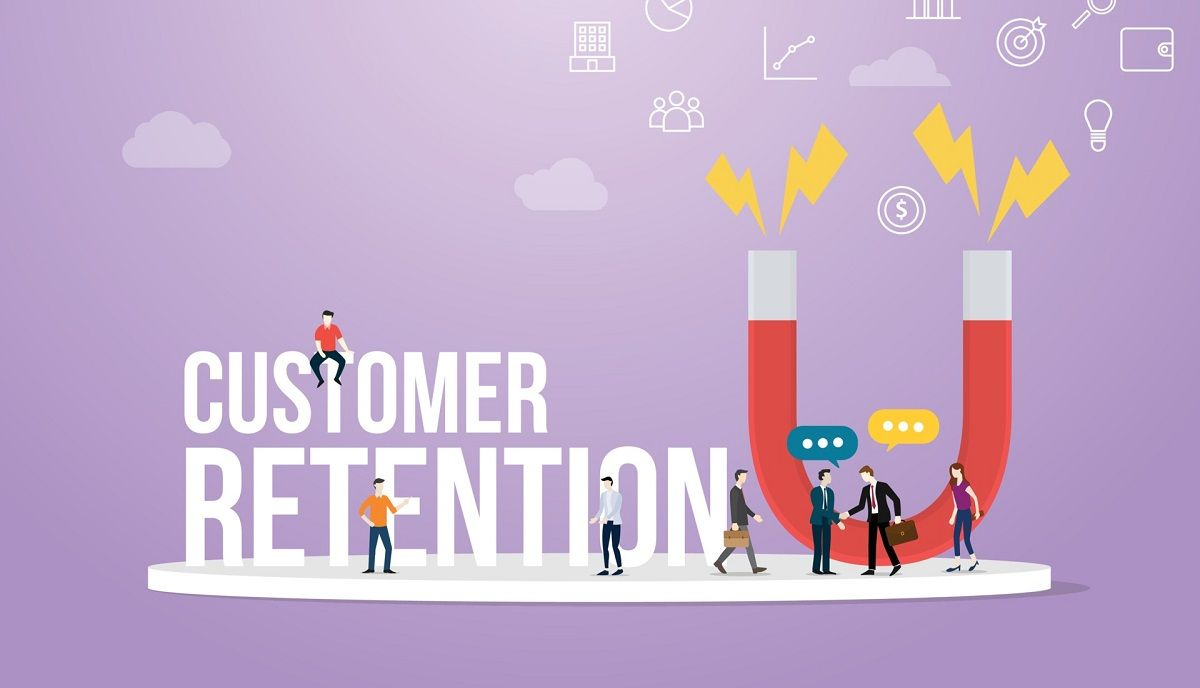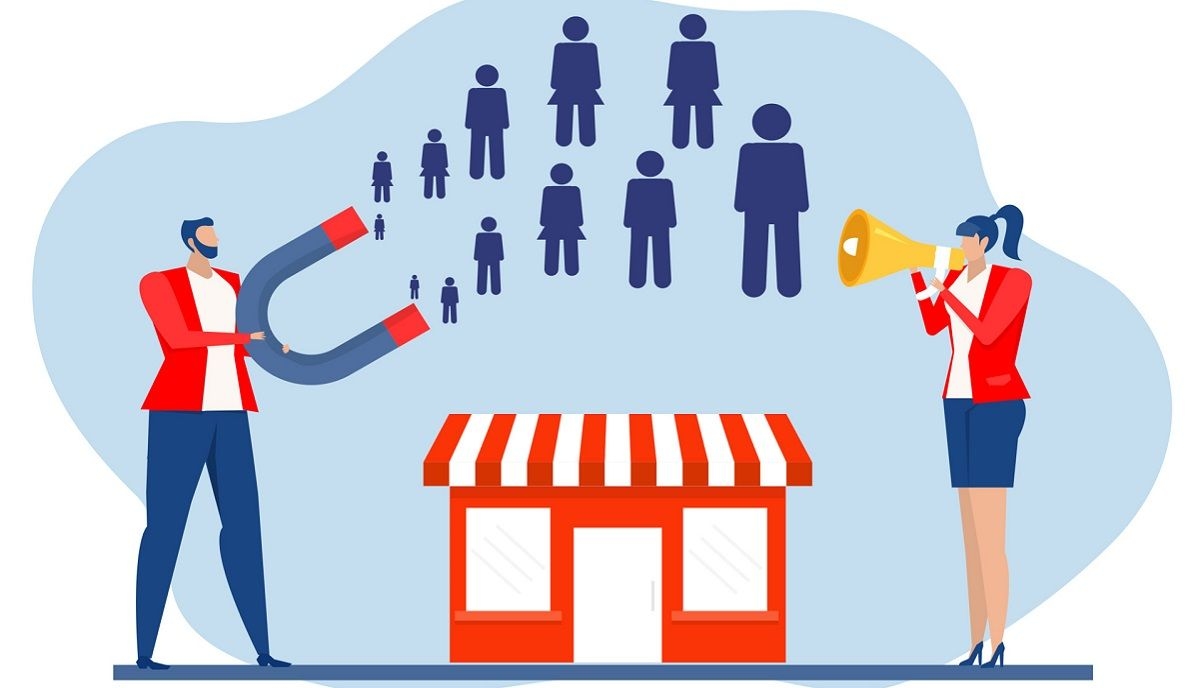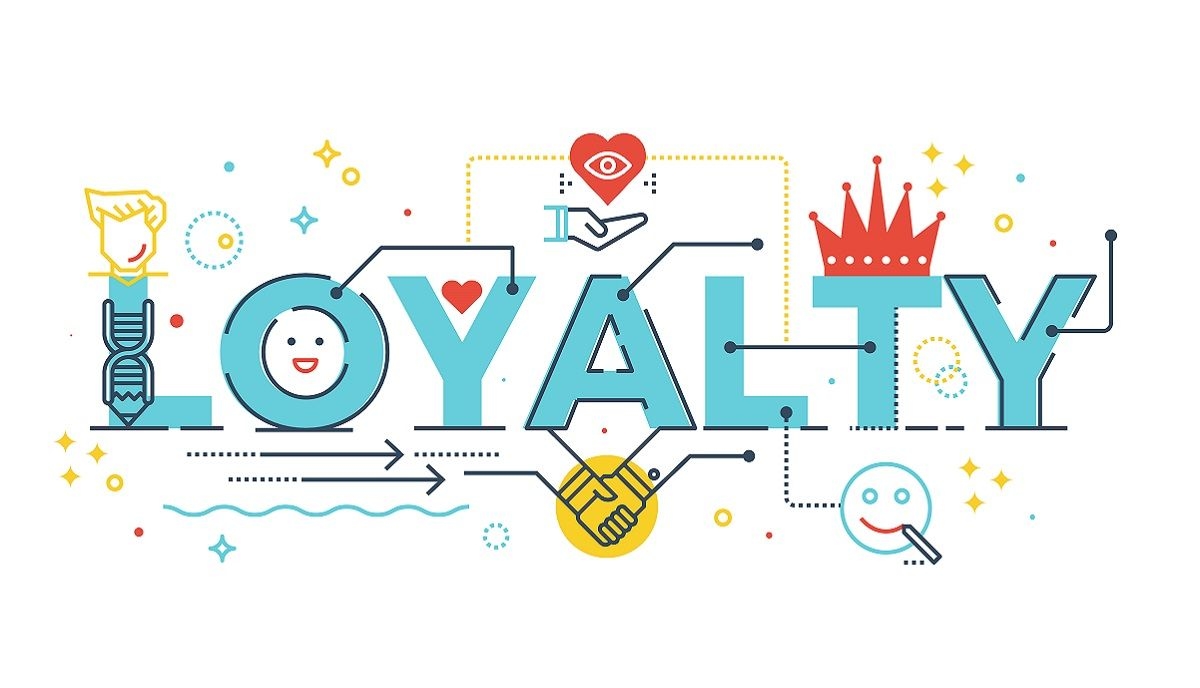Loyalty
Customer Retention: Meaning, Importance, Examples & Strategies
The best customers are the ones that trust you with their money time after time because you provide them with ...


Weekly newsletter
No spam. Just the latest releases and tips, interesting articles, and exclusive interviews in your inbox every week.
Tags
Customer Retention
Authors
Daniela Andreevska
Daniela has 6 years of experience in digital marketing for ecommerce businesses.
Aws Alnabulsi
Aws is the Co-Founder of Coretava, a complete retail ecommerce growth platform. He has 6+ years of experience in managing and growing ecommerce businesses.
Carlos Guerberoff
Head de Parcerias na Coretava. Especialista em desenvolver e fortalecer relacionamentos estratégicos. Orientado para resultados e apaixonado por construir conexões duradouras.
Henrique Letoldo
Head of Sales na Coretava. Com vasta experiência em liderança de equipes comerciais, busca constantemente impulsionar o crescimento e maximizar resultados. Apaixonado por inovação e estratégias de vendas eficazes.
Aws Alnabulsi
CEO e fundador da Coretava. Visionário e empreendedor apaixonado, lidera a equipe com visão estratégica e inovação, buscando transformar o varejo através de soluções tecnológicas.
The best customers are the ones that trust you with their money time after time because you provide them with value exchange and desired solutions. Loyal customers don’t simply purchase your product or use your services one time; they keep coming back to your business over and over again, resulting in customer retention.
Customer retention is greatly beneficial in improving your customer lifetime value (CLV) and boosting your online store revenue. It also enables you to build remarkable relationships with your customers based on brand loyalty.
In this article, we will explore the customer retention meaning, down to relevant examples and customer retention strategies that you can apply to your ecommerce business. Furthermore, we will elaborate on how different Coretava products can turn into your best resource in successfully retaining customers.
Table of Contents
- What Is Customer Retention?
- Why Is Customer Retention Important?: 5 Benefits
- How Do You Measure Customer Retention?: 5 Metrics
- 5 Examples of Customer Retention That Work
- 8 Strategies to Increase Customer Retention
- Boosting Customer Retention for Your Ecommerce Business
What Is Customer Retention?
The customer retention definition in marketing is the process of appealing to already existing customers with the intention of turning them into repeat buyers, preventing them from seeking products and services from competitors.
Customer retention and loyalty is key for your ecommerce business because it facilitates increase in profitability, costs less than the acquisition of new customers, builds brand loyalty, and gives your business the competitive edge that it needs to succeed and grow.
Why Is Customer Retention Important?: 5 Benefits
Ecommerce businesses that prioritize having an effective customer retention strategy are 40% more likely to sell to already existing customers than they are capable of converting new ones, according to OutboundEngine statistics.
There are a few other benefits of customer retention management to successfully running your ecommerce business including that customer retention:
Is Cost Saving
Customer retention marketing enables your business to spend much less since retaining customers is a much cheaper option than acquiring new ones. Although figures vary for each industry, market research quoted by Forbes shows that acquiring a new customer costs five times as much as retaining an already existing one. Therefore, knowing that customer retention costs are significantly lower saves your business from spending on expensive advertising, sales outreach, and ecommerce marketing campaigns.
Increases Profit
Customer retention tactics contribute to sustainable business growth by increasing profitability. Giving your already existing customers a consistent positive experience and keeping them properly engaged increases the probability of them trying out new products, which drives up sales. A 5% increase in customer retention translates into more than 25% increase in company profits, as reported by Bain.com.
Provides Customer Insights
Customer loyalty and retention provide valuable data and insights necessary to map your customer journey. As a result of customer retention analysis, data can be used to generate insights that are relevant in helping you understand customer actions, identify gaps in the market, predict purchasing trends, and identify opportunities for improvement. And all of these are key in data-based decision making processes.
Boosts Customer Loyalty and Referrals
When your business focuses on increasing customer retention, a better relationship with the already existing customers is formed. Customer loyalty and retention arise as a result of consistent positive experiences with your business and the provision of value exchange. Happy customers often make positive recommendations to their families and friends, and these referrals can be leveraged to acquire new customers.
Deduces Customer Churn
Customer churn rates refer to the number of customers that stop purchasing your products or using the services you offer. Customer churn is costly to business and can occur as a result of product quality, poor customer service, and better offers from competing companies. Whereas high churn rates weigh down on the sales team and overall growth of the business, customer retention can be boosted as a solution with tactics like offering incentives to regular customers and deploying well-trained customer representatives.
How Do You Measure Customer Retention?: 5 Metrics
Customer retention metrics are variables used to measure the probability of attracting and retaining customers to your ecommerce business. These metrics are applied in various formulas created to determine the performance of business operations in a given period, helping you analyze every aspect of customer retention to generate the data you require to facilitate business growth.
There are plenty of customer retention metrics that your business can keep a track of, and below are the most important ones of them:
Customer Churn Rate
One of the simplest customer retention metrics to be measured is your company’s customer churn rate.
A customer churn rate refers to the rate at which customers stop doing business with you.
It is essential to measure your monthly churn rate because it helps you determine whether your customer retention efforts are working at all.
Although it isn't easy to tell within a month, customer retention trends become apparent when analyzed over a period of six months to a year.
Monthly Customer Churn Rate Formula
Monthly Customer Churn Rate = Number of Customers Churned in a Month / Total Number of Customers at the Start of the Month x 100
Customer Lifetime Value (CLV)
Customer lifetime value (CLV) is a top-level metric that measures how much profits and revenue are generated by each customer during their entire time of doing business with the company.
CLV as a unit of measurement is important because it points out whether or not your company needs to encourage customers to make additional purchases.
For example, when your CLV is low, you can opt to run loyalty programs to stimulate repeat purchases, whereas having a high CLV means you are capable of spending more funds on the acquisition of new customers.
Customer Lifetime Value Formula
Customer Lifetime Value = Customer Value x Average Customer Lifespan
Where Customer Value = Average Purchase Value x Average Number of Purchases
Net Promoter Score (NPS)
The net promoter score (NPS) metric quantitatively measures the overall customer satisfaction and loyalty to your brand, identifying whether customers are likely to recommend your product or service to someone else.
Companies attain their NPS by sending customers a single-question survey asking whether they would recommend a product or service to other people. Customers with low scores are categorized as “detractors”, while those at the top are “promoters”, and midrange customers are “passive”.
Net Promoter Score Formula
Net Promoter Score = % of Promoters - % of Detractors
Repeat Purchase Rate
The repeat purchase rate is defined as the percentage of customers who have returned to transact with your business again after completing their first purchase.
This metric is often used by marketing teams to assess the impact of customer retention strategies and is a great unit of measurement for customer loyalty.
By analyzing which types of customers are making repeat purchases, you can boost your customer retention strategy, putting your business in a better position to optimize repeat purchases.
Repeat Purchase Rate Formula
Repeat Purchase Rate = Number of Returning Customers / Number of Total Customers
Customer Retention Rate (CRR)
The customer retention rate (CRR) is the most straightforward retention metric that measures the rate at which the business has retained customers over a period of time.
The customer retention rate is expressed as a percentage of a company’s existing customers who remain loyal within the given timeframe.
Customer Retention Rate Formula
Customer Retention Rate (CRR) = ((E-N) / S) x 100
Where “S” symbolizes the customers you have at the start of the analyzed time frame, “E” marks the customers you have at the end of the given period, and “N” stands for the customers you have acquired during the period of measuring.
5 Examples of Customer Retention That Work
Effective customer retention tactics help you to boost brand loyalty by forming long-lasting relationships with consumers, who might even offer free advertising by making referrals within their own circles of influence.
Below are 5 real-life examples of customer retention programs that have proven to actually work over time:
Offering Omnichannel Customer Services
Nike takes the omnichannel approach of retaining customers by merging the physical with the digital channels.
Its omnichannel marketing strategy offers a wide variety of features which range from a Twitter support account dedicated to customer service and queries, to factoring in user locations that help customers find the nearest Nike physical store.
Collecting and Using User Feedback
The retail chain Nordstrom collects customer feedback in a variety of ways including actively soliciting customer reviews of its products and prompting users to answer feedback surveys.
The data collected is then analyzed and used to make better business decisions such as improving customer experiences and boosting customer loyalty.
Incorporating Subscriptions
Companies that incorporate subscriptions as a customer retention model have a better chance at keeping consumers in the long term, whilst being able to track the user data effectively to monitor and analyze customer churn.
For example, by signing customers up for Prime, Amazon not only generates extra revenue from the subscription fees, but it also increases the odds that subscribers will buy other products too.
Using Emails and Newsletters for Engagement
An example of well-executed email marketing is Sherwood Media's “Snacks” newsletter, a daily email that goes out to already existing customers based on their typical customer journey and purchase frequency.
This newsletter is used to keep in touch with customers and contains major stock moves, amusing images, and a quick news summary.
Creating a Community
Within the reproductive health industry, Flo provides a platform that predicts, analyzes, and tracks individual health data.
Although there are plenty of apps on the internet offering the same service, Flo stands out by prompting users to discuss reproductive health issues amongst each other, and even holds space for anonymous chat rooms ensuring discretion and privacy.
The creation of such a robust community is a unique value added that enables Flo to retain customers at a higher rate than competitors.
8 Strategies to Increase Customer Retention
Having dived into the importance of retaining customers as well as relevant real-life examples of how well-known brands have done it right, next we need to lay down the strategies that you ought to implement in order to boost customer retention and loyalty.
Below are 8 strategies to increase customer retention for your ecommerce business:
Have Preset Goals
Having put into consideration the size of your customer base as well as the type of product you sell, it is important for customer retention that you set feasible sales goals. It is advisable to calculate your customer retention rate, and in the event that you are currently retaining customers at 10%, it is better to set a more conservative goal than setting a goal of 50%.
Map Your Customer Journey
Mapping your customer journey refers to the process of charting your customer interactions with your brand across all touchpoints. With a better understanding of the different journey’s customers take before deciding to purchase your product, you can better optimize their customer experience across all channels and touchpoints.
Streamline User Onboarding
Through streamlining the user onboarding process, companies ensure that the customer is aware of the benefits the products have to offer, enabling them to get the most out of the product and eliminating churn. Customers are more likely to come back to you for more products or services when they have been able to benefit fully from their first purchase.
Upsell and Cross Selling to Existing Customers
Upselling convinces already existing customers of the need for upgraded products and services, making them more invested in your brand. Cross selling, on the other hand, gets them to buy complementary goods or services to take full advantage of the product they originally intended to buy. Upselling and cross selling is an excellent strategy to boost customer retention amongst loyal customers, seeing as they receive added value at an extra cost.
Set Up a Customer Loyalty Program
One of the most important benefits of a loyalty program is that it incentivizes existing customers to come back again to your online store and continue doing business with you in the long term. This is achieved by providing rewards for shopping from you rather than your competitors, and the rewards can come in different forms, including cashback, points, access to special products and offers, or unique badges and benefits.
Provide Personalization
Ecommerce personalization is a growing trend in the online selling and shopping space that’s been largely enabled and supported by technology and artificial intelligence (AI). When a brand customizes the customer journey and provides personalized search and recommendations, it makes it more enticing for customers to continue buying from them rather than competitors. After all, customers value it when their needs are met exactly and reward companies that manage to do this with increased customer retention rates.
Establish an Omnichannel Experience
As the ecommerce is exponentially growing, there are still some benefits that come with in-store shopping, and the most successful businesses are those which manage to provide a seamless integration between online and offline experiences. To retain customers at a higher rate, you need to work on creating a phygital experience where customers experience the same process and practice regardless of the channel where they interact with your brand.
Make Use of the Right Tools
Last but not least, in order to be able to implement all the above-listed customer retention strategies in the optimal way, you need to gain access to all the best ecommerce apps and tools.
Coretava offers a comprehensive suite of tools that allow ecommerce business owners and their teams to streamline the process of boosting customer retention:
- Core Loyalty enables you to set up loyalty programs including cashback, points-based, tier-based, and referral programs, all targeted at enhancing customer retention.
- Core Marketing employs personalized emails and SMSs as well as customized pop ups aimed at engaging already existing customers and keeping them engaged with your brand.
- Core Personalization as a tool for customer retention analyzes purchasing behavior data in order to provide smart search and personalized product recommendations, improving the customer experience and making it more relevant.
- Core Omnichannel provides a seamless and consistent brand experience that meets customer preferences across all touch points.
To learn more about how Coretava can help you increase customer retention in an AI-driven manner, schedule a demo with our team.
Boosting Customer Retention for Your Ecommerce Business
Improving the customer retention rate for your ecommerce business is a cost-saving growth marketing strategy since engaging already existing customers is cheaper than acquiring new ones. Moreover, it boosts customer loyalty and referrals whilst reducing the customer churn rate. All in all, you are able to generate more revenue and expand your operations without allocating a lot more financial and human resources to your business growth.
If you need help in executing the best customer retention strategies, make sure to check out Coretava. Our tools allow you to benefit from all the hottest trends in ecommerce including personalization, digital marketing, loyalty programs, and omnichannel presence.
Get started today!
Related Posts

Ready to Transform Your Retail Strategy?
Get a personalized consultation with our retail AI experts
Resources
Contact Us
+1 (415) 830-3900
info@coretava.com
Location
São Paulo, Brazil


